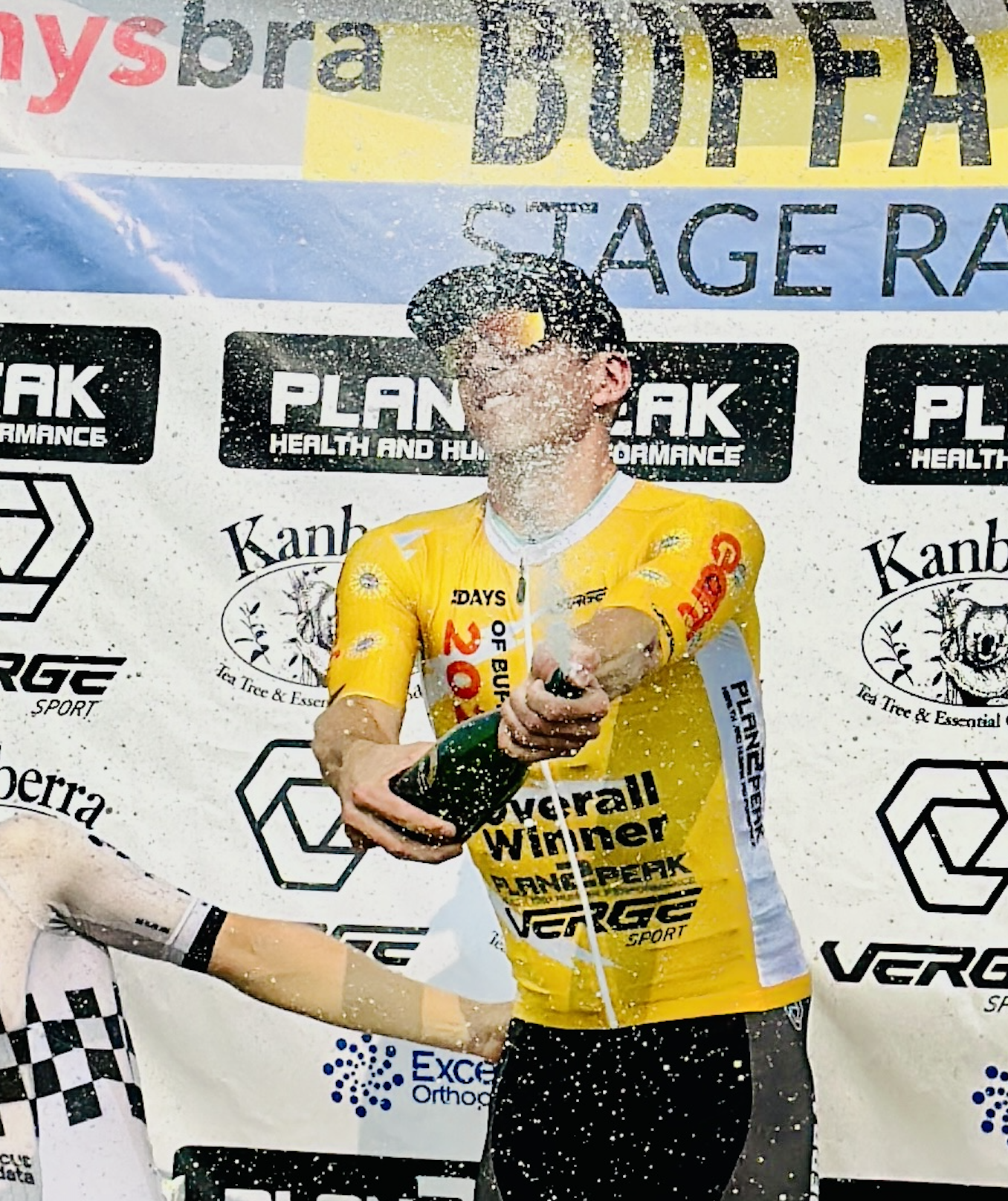Post Season Cycling Training: How to Target Your Limiters Before Base Training
Why August, September, and October might be your secret weapon months before base training begins
The End-of-Season Dilemma
The final event of the season is in the books, but the fitness is humming…aerobically, you’re on point, you’re motivated to train, but a lot of people just start yelling “WOOO IT’S THE OFFSEASON”.
Do you take a total break, cruise around on coffee rides, or jump straight into base training?
For many riders, “offseason” is a vague period where structure disappears. That can be a missed opportunity. Those 6–10 weeks between your last race and the start of a dedicated base phase can either:
Drift by with little purposeful training.
Transform you into a more complete rider for next year.
In this post, we’ll talk about why the late summer / early fall window is prime time to target your limiters—the specific weaknesses that hold you back during the race season—and how to train them without burning yourself out before next year even begins.
Why This Period is Different
When you’re in the middle of a race season, everything revolves around performance for upcoming events: tapering, sharpening the word, and maintaining freshness. That means there’s limited room for deep, targeted work on weaknesses if you’re racing a lot.
But after the season ends, you suddenly have:
A fully loaded aerobic engine from months of racing.
High neuromuscular sharpness that hasn’t faded yet.
Freedom from race-day stress so you can experiment without pressure.
In other words, you’ve got the fitness bank account full, but no immediate withdrawals needed. That’s the perfect time to invest in something different—training your limiters.
What Are “Limiters”?
In cycling, limiters are the aspects of your physiology, skill set, or mindset that hold you back when it counts.
Common examples include:
Anaerobic power — struggling to follow explosive attacks.
VO2 MAX — getting gapped on hard climbs or breakaway surges.
Threshold power — falling off the pace during long, sustained efforts.
Repeatability — you can do one big effort, but struggle to recover for the next.
The trap? Many riders avoid training their limiters because:
It’s uncomfortable (mentally and physically).
They don’t want to risk blowing up before a race.
They’ve convinced themselves “that’s just how I am as a rider.”
This late-season window removes those excuses.
Why Not Just Take a Break?
Don’t get me wrong—rest is important. But taking two, three, or even four weeks totally off right after your last race can waste an opportunity.
Instead, think of your “real break” as something you can schedule later, when:
Weather turns foul in your area.
You’re mentally ready for downtime.
You want to fully reset before base training begins.
By using this earlier window for limiter training, you leverage your existing race-season fitness to attack those weaknesses without first rebuilding your general aerobic base.
Training Limiters: The Big Three Focus Areas
In my coaching and personal experience, three areas yield the biggest return in this window:
Anaerobic Power
VO2Max
Threshold Development
Let’s dig into each.
1. Anaerobic Power
Anaerobic power is your ability to produce massive bursts of energy mostly without oxygen—think 30–60 second attacks, punchy climbs, or the final kick to the line. (Even a 30s effort has some aerobic contributions to it, so aerobic power is ALWAYS important.)
The challenge: if this isn’t your natural strength, it’s not something you can “brush up on” with a few efforts before a race. Anaerobic capacity requires specific stress over time to improve, and might require some beefy gym work if you are musculatively weak.
Why now?
These efforts can be mentally and physically draining around races.
Doing 2–3 sessions a week might leave you wrecked in race season.
You can go deeper without worrying about freshness for an upcoming event. You can dig super deep here, with plenty of time to recover before base.
Example workouts:
8×45-second all-out efforts with 6–8 minutes rest.
Hill sprints from a near stop, 15–20 seconds max, repeat 10–12 times.
“Snap and settle” — surge 20 seconds out of the saddle, then hold threshold for 2 minutes.
Coaching tip: Treat these like you’re trying to rip the crank arms off your bike. If you’re not gasping, seeing stars, or feeling like your quads might explode, you’re not going hard enough, and you need to figure out what is holding you back. Some athletes are just a bit worried about going this hard—it should feel VIOLENT.
2. VO2Max (Maximal Aerobic Power)
VO2max work targets your aerobic ceiling—how much oxygen your body can utilize. It’s crucial for nearly all aspects of our sport, especially:
Breakaways.
Long climbs.
Hanging on when the pace goes nuclear.
Why now?
You can experiment with formats you might avoid in-season.
You can accumulate more total VO2 time without worrying about race recovery.
Example workouts:
Classic 5×5 at 110–120% FTP, equal rest.
Descending intervals — 3 min, 2 min, 1 min, short rest, repeat for a total of 20-25 minutes in zone.
KOM chasing day — 45-minute warmup, then hunt 4–5 local climbs in the 4–6 minute range.
Coaching insight: Many riders rely heavily on 30/30 or 40/20 intervals. Those are great, but mixing in sustained VO2 intervals teaches you to hold high power without micro-rests. This pays huge dividends in races.
3. Threshold Power
Your FTP (Functional Threshold Power) is the foundation for nearly every race scenario. Improving it means you can:
Ride harder, near or at threshold, for longer.
Recover quicker between hard surges.
See improvement in your long rides, as an increase here brings almost every zone up with it
Why now?
You can handle the accumulated fatigue of harder threshold blocks without race conflicts.
You can experiment with formats that are mentally demanding.
Example workouts:
4×10 min just above FTP (around 110% FTP), with 4-8min rest.
Over-unders — 2 min above FTP, 2 min just below, repeat for 10 minutes to start, working out to 20 minutes.
Rest reduction sets — start with 6×6 min at FTP, then gradually shorten recovery.
Coaching insight: Check out this blog which goes into the Over Unders and Rest Reduction in more detail.
How to Blend This with Fun Offseason Riding
You’re not a robot. If you only grind out hard workouts, you’ll start hating the bike by spring. The key is structured flexibility:
Pick 1–2 focused workouts per week.
Fill the rest of your week with enjoyable endurance rides.
Allow spontaneous group rides—just understand they might replace a structured session.
Experiment Without Fear
This is also a time to test:
Higher/lower cadence work.
Equipment tweaks (crank length, saddle position).
Nutrition strategies for hard workouts.
Strength training in the gym.
You can afford to “mess it up” now without costing yourself a race result.
The Long Game
One 8-week limiter block can help you learn more about yourself as a rider, racer, and athlete, and quite possibly revolutionize your 2026 season. Also, stack 4–5 years of these, and you’ll see:
Noticeable jumps in power where you used to struggle.
A more complete rider profile.
Confidence in scenarios that used to scare you, where “I’m just not good enough at that”.
Key Takeaways
Don’t waste the post-season window—use it to target your weaknesses.
Keep it fun by mixing structured workouts with rides you enjoy.
Focus on anaerobic power, VO2max, and threshold for maximum impact.
Experiment with cadence, gear, and new training formats.
Save your full break for when it serves you best.
GOOD LUCK!
Don’t let “offseason” be a holding pattern. If you want to come into next year stronger, smarter, and more complete, treat August, September, and October as your secret weapon months. Your spring self will thank you.
Contact me if you really want to get ready for 2026 with one-to-one coaching or a training plan!

